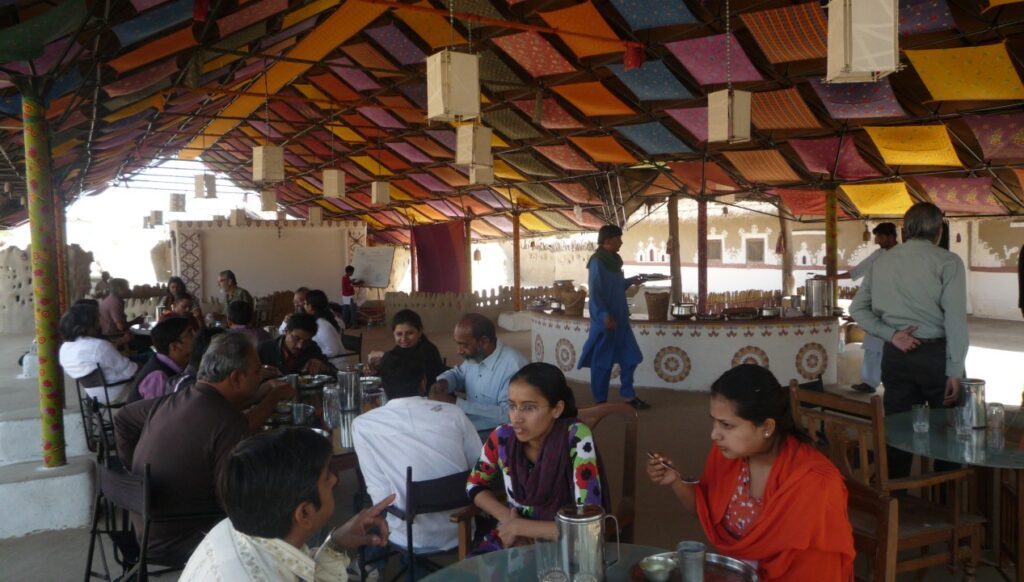
I dined with a family with 2- and 4-year-old kids at a restaurant. The kids ate hardly any food but there was space and there was live music and the 4-year-old danced to music all evening. That made the evening an enjoyable and memorable occasion for everyone. Music and dance—positive distractions, relegated food to the background.
Knowing that the taste of food is perceived in the mind and not on the tongue, food curators work on the sense of sight, smell, touch, taste, and hearing. The food has to look and smell good, have the correct temperature and texture and some foods also need to sizzle nicely. Since people have different tastes, food is served with options of pungent or mild, sweet or sour taste and in addition, there are seasonings, sauces, toppings and other condiments available to customize the taste. Above all, restaurants work on aesthetic ambience, music and distractions like display screens or live performances.
Can you imagine how it would be if the ‘association of food curators’ prescribed one standard taste of food for everyone in the world? What if that taste was based upon the maximum number declaring it as acceptable?
Sounds ridiculous, but this is what the air conditioning industry has done to the world. Their professional association has defined a standard that prescribes a narrow temperature range for thermal comfort in all kinds of buildings—offices, malls, schools, homes; in all kinds of climates—hot, cold or temperate; for all kinds of people—male, female, young and old; for all cultures—Arab, American or African. The standard is based upon extensive research on ‘subjects’ in sedentary activity in cold climates but the industry believes it is applicable to every situation.
This acceptable temperature range was defined by laboratory research where they put research ‘subjects’ in a controlled, variable thermal environment and asked them ‘how do you feel thermally’ and answer on a 7-point scale from very cold to neutral to very hot. The responses were used to define the temperature range in which the maximum number of ‘subjects’ feel thermally neutral. The assumption being that thermal neutrality is the same as the state of comfort.
Thermal comfort
Thermal comfort, like taste, is perceived in the mind. Air conditioning theory lists six factors as affecting thermal comfort—air temperature, radiation, humidity, air movement, clothing level and human activity. But just two factors—air temperature and humidity—are controlled for providing thermal comfort. This reduction is based on the assumption that in a standard office environment, the other four factors vary only slightly.
Even so, ASHRAE 55 (American Society of Heating Refrigeration and Air conditioning Engineers) is taken as the gold standard for thermal comfort not just in offices but in all kinds of buildings. The main standard deals with airconditioned buildings and its extension called Adaptive Thermal Comfort Standard deals with naturally ventilated buildings in temperate climates. The standard treats the human body as a passive receptacle of sensations that does not interact with the environment. Since these American standards are being applied to buildings in India, one needs to see if this application makes sense.
India has been divided into five climatic zones—Hot-dry, Warm-humid, Composite, Temperate and Cold, but this discussion is being limited to the hot-dry and composite zones that cover much of the Indo-Gangetic plain, Rajasthan, parts of Madhya Pradesh, Gujarat and Maharashtra. These two climatic zones have a predominant summer season, monsoon and a short winter season. Centrally airconditioned office buildings and hotels in these zones are designed to meet the ASHRAE 55 standard for thermal comfort and ASHRAE 62.1 and 62.2 standards for indoor air quality and issues of pollution and hygiene.
The ambient temperatures in the hot dry and composite zones in India exceed the range defined in the Adaptive Thermal Comfort Standard and therefore this standard cannot be applied to naturally ventilated school buildings in the hot climate zone. Other buildings like homes and smaller offices that have both natural ventilation and air conditioning are not covered by either standard. If such naturally ventilated buildings are without mechanical ventilation, they have no way of meeting indoor air quality standard either.
The Standards
So, the question one could ask—if ASHRAE standard is not applicable, is there an alternative standard that buildings in India ought to be designed to?
It is well known that air conditioning (and heating) of buildings is one of the causes for emission of carbon and greenhouse gases that aggravate climate change. Air conditioners warm the micro climate around the building due to rejected heat and the global macro climate due to emitted carbon and greenhouse gases. The use of air conditioners generates demand for more air conditioning.
According to some estimates, the air conditioners population in India is growing at 15 times the growth rate of population and it is possible that most of the additional solar PV power that is being installed in India, will go towards meeting the power requirements of the additional air conditioners that India is expected to install. To avoid exacerbating climate change, it is important to find ways of providing thermal comfort in buildings with little or no air conditioning.
While the theory of air conditioning says human beings are more productive when they are thermally comfortable in the prescribed range of temperatures, geography tells us that human beings live and are productive in many different environments and in each case, they find the means to ameliorate discomfort of all kinds including thermal discomfort.
To ameliorate discomfort on a long-haul flight, passengers use extra clothing and blankets, adjust the personal air conditioning register, eat and drink hot or cold liquids, and move around to warm up or to find their own zone of thermal comfort.
To ameliorate discomfort in furniture, people adjust height of chairs, use cushions or move to seats of different hardness and design.

To avoid postural discomfort in a hospital bed, patients make many adjustments to the bed even when they may be in pain or in great discomfort otherwise.
Human beings share with other warm-blooded creatures the natural ability to adapt to different conditions but the ability to create and use a wide range of tools to avoid discomfort is one capability that has allowed humans to progress farther than all other species. Air conditioning itself is one such tool invented and used by humans, and this discussion is about the unintended consequences of using air conditioning.
In different situations, human beings strive to reduce discomfort, examine alternatives available, and then accept the least uncomfortable alternative. The Bedouin who live in the desert, remain comfortable at air temperatures in excess of 45 deg C and the Sami people (Lapps) who live near the arctic are comfortable at temperatures well below freezing. Both communities are nomads and live in tents but use completely different methods to ameliorate thermal discomfort and live happily in extreme conditions.
Just as people experience and enjoy different tastes of food, human beings are capable of experiencing and enjoying different thermal environments as well. The six seasons of the year and four parts of a day, each brings a different thermal experience. Human beings can perceive these different thermal environments and they can enjoy many of them. Near the equator, there is no summer or winter and temperature changes little from day to night, but even there, people enjoy the little variations that exist.
It is not the absolute temperature but the ability and flexibility of ameliorating discomfort that human beings need in order to be comfortable. Good design creates the situation in which people can easily adapt to the given conditions.
Thermal experiences
Historically, in addition to buildings there were gardens, courtyards, verandas, balconies, terraces, and gazebos with different thermal experiences. Balconies, as non-conditioned private habitable space, are seen in contemporary multi-story residential buildings, but in office buildings even personal balconies are not seen.
If private spaces with a different thermal experience cannot be provided, the possibility exists to provide community spaces with different thermal experience in all types of buildings. This is what good design is about.
Thermal controls
The personal control of the thermal environment is easy in residential buildings. Fans, coolers, air conditioners, change of clothing, duvets, blankets etc. are commonly used for this purpose. In open plan offices it is more difficult though not impossible to provide personal controls. The thermal comfort standard does not require them.
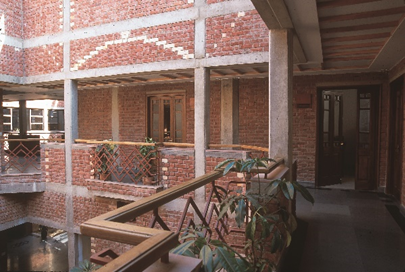
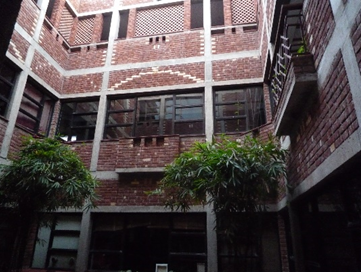
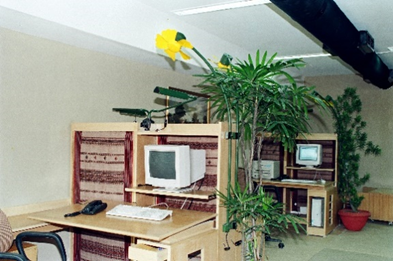
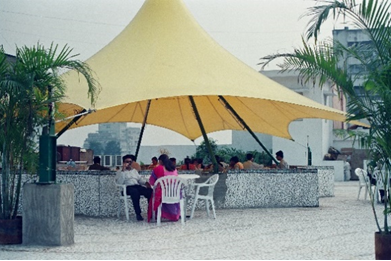
Examples from author’s work are UBEST office interior with personal air circulators and personal registers for cooled fresh air at KLG Systel office. In a different project, the first phase buildings at NIIT University, Neemrana were sealed and pressurized to keep dust out and supplied with cooled fresh air. The inability to open windows or to turn on a ceiling fan became a major source of dissatisfaction. Buildings in the second phase got openable windows and fans, a lot of dust and less of cooling but a higher level of satisfaction.
Thermal Satisfaction
It needs to be reiterated that building to a narrow temperature range specified by any international standard cannot lead to satisfaction for everyone in all kinds of buildings in India.
Good design has always been about creating different thermal environments and then to give individuals the necessary tools to ameliorate any discomfort in their environment.
Just as successful food curators use sight, smell, touch, sound and even storytelling as contributors to taste, building designers can use daylight, view, fresh air, natural fragrances and sounds as contributors to the thermal environment. Such an approach will lead to an enlarged range of temperatures that may be found workable resulting in a reduction in energy use when buildings do not require as much cooling and heating.


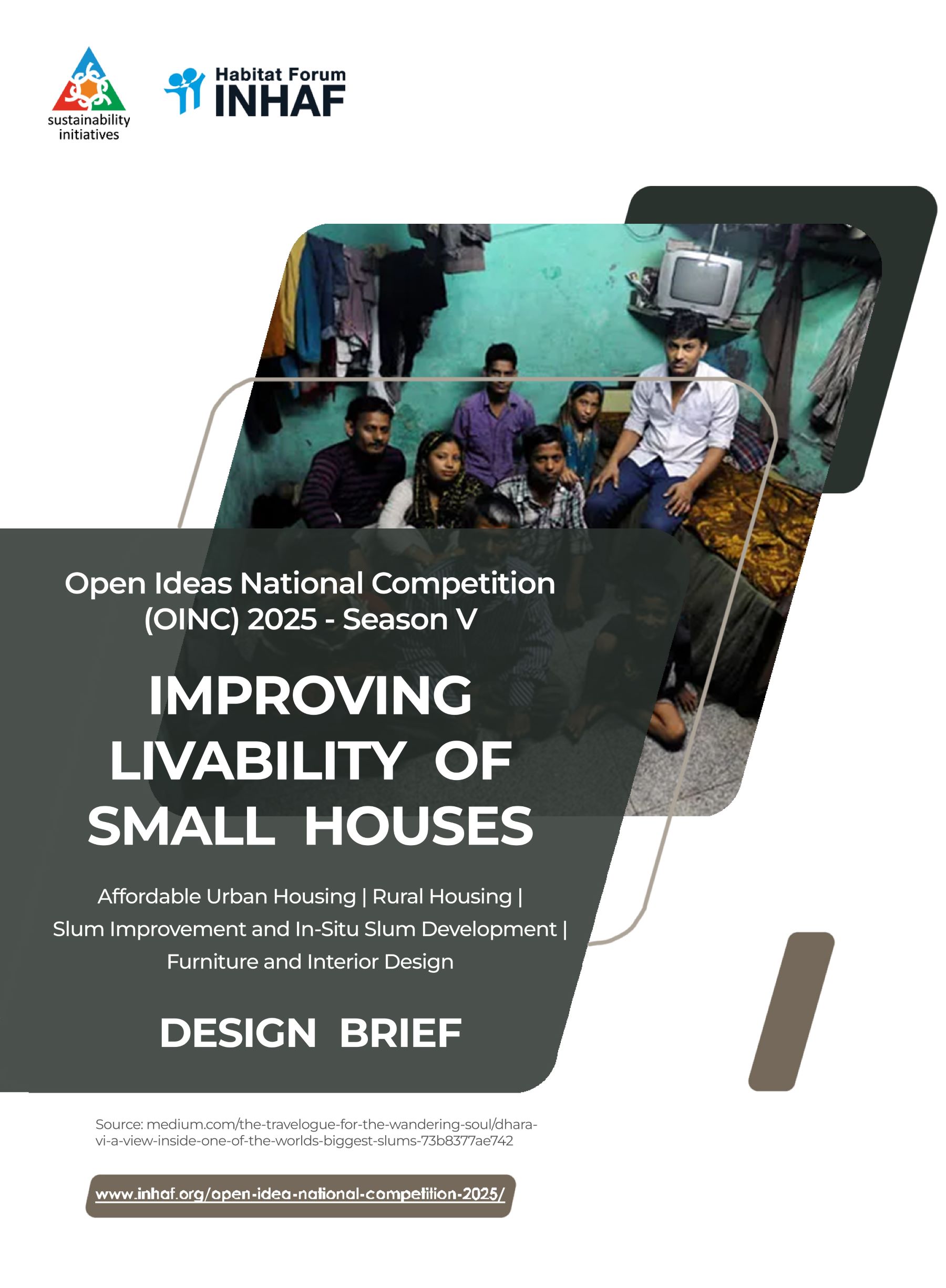
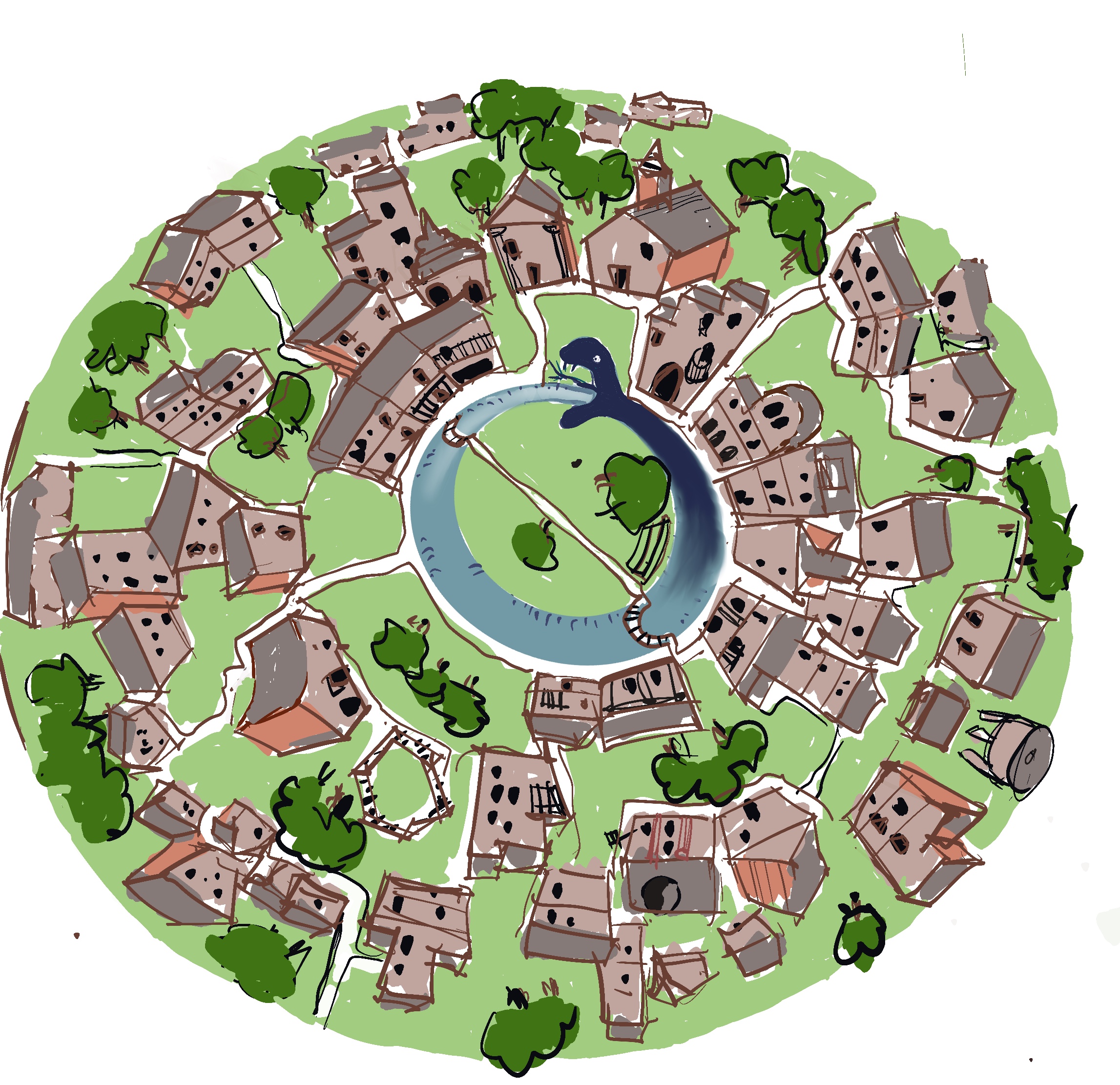

One Response
Put across very succinctly what we feel all the time.